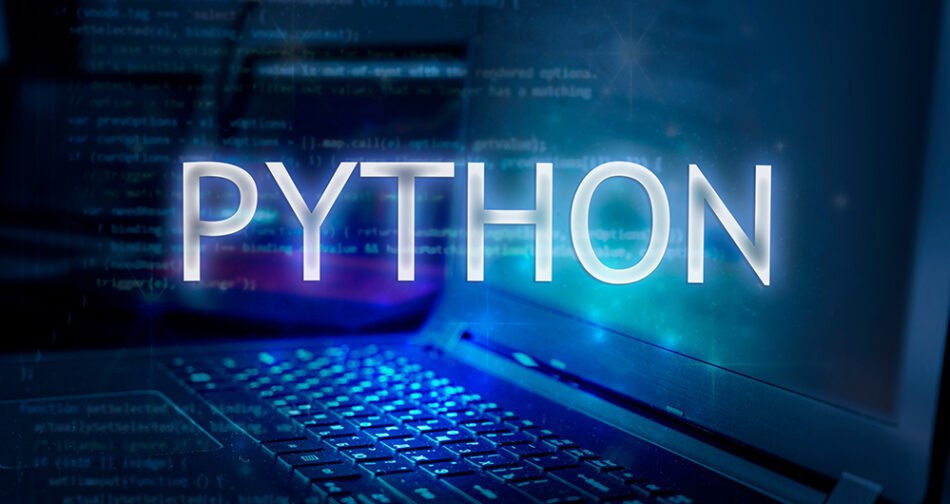Explore how Python drives digital innovation through AI, data analysis, and cutting-edge development services, transforming businesses in the digital era.
In the fast-paced digital world, organizations today need resources that foster innovation and growth. Python has become popular for its simplicity, flexibility, extensive ecosystem, and for the way it enables organizations to create AI applications, analyze data, and develop software rapidly.
As highlighted in the TIOBE Global Index 2025, Python ranks #1 among programming languages, and it has achieved extensive industry adoption across the globe. In this blog, we will cover how Python implements digital transformation strategies, its applications in artificial intelligence and data analysis, and the opportunities organizations may take advantage of to achieve business growth.
Python: A Catalyst for Digital Transformation
Python’s popularity stems from its clear syntax, readability, and strong community support. Unlike other programming languages, Python allows developers to focus more on solving business problems rather than grappling with complex code structures. Its wide range of libraries and frameworks, such as TensorFlow, PyTorch, Pandas, and Django, empowers companies to develop robust applications efficiently.
From startups to large enterprises, Python is being leveraged to accelerate innovation in sectors like finance, healthcare, e-commerce, and logistics. Its ability to integrate seamlessly with emerging technologies positions it as a cornerstone of digital innovation.
Driving Innovation with Artificial Intelligence
Python’s use in artificial intelligence is among its most important contributions to the digital world. Applications of AI are revolutionizing decision-making, customer experiences, and company operations. Libraries like TensorFlow, Keras, and Scikit-learn are part of Python’s robust artificial intelligence ecosystem and make it easier to create machine learning models, natural language processing programs, and predictive analytics.
Companies can leverage AI tools on Python to anticipate customer actions, automate repetitive tasks, and inform decision-making. In the field of healthcare, AI models support disease diagnosis, treatment protocols, and predict outcomes. In finance, AI algorithms using Python allow for fraud detection, credit rating decisions, and portfolio risk and return predictions.
Unlocking Insights with Data Analysis
Data is the backbone of digital transformation, and Python excels in data analysis and visualization. With libraries like Pandas, NumPy, and Matplotlib, organizations can manipulate large datasets, identify trends, and derive actionable insights. Data-driven strategies enable businesses to optimize operations, improve marketing effectiveness, and make informed decisions in real time.
E-commerce companies utilize Python for customer segmentation, examining why people purchase products, so they can recommend products to customers and increase back-end sales. Logistics companies rely on data analytics with a Python backend to optimize supply chains, assess demand risk, and minimize costs. Government agencies also use Python ideas to analyze population, study public health trends, and facilitate urban planning.
Expanding Horizons with Python Development Services
Beyond AI and data analysis, Python has a well-established reputation for use in web application development and enterprise software, automation tools, etc. Frameworks like Django and Flask provide the ability to quickly build an application, which helps a business release products to market faster. Python’s scalability ensures that solutions can scale with the needs of the organization, from start-ups to large enterprises.
Python development services also span automation, which reduces human error, enhances efficiencies, and saves costs. The automation of repetitive tasks containing low-level cognitive components, such as report generation, data entry, and automated testing, allows organizations to focus their efforts on innovation and strategic initiatives.
Emerging Python Trends in Digital Innovation
The future of Python in digital innovation is influenced by several trends:
- AI-Enabled Automation: Companies are increasingly deploying Python-powered AI to automate complex workflows, from customer service chatbots to intelligent document processing.
- Advanced Data Analysis: Python remains at the forefront of analytics for big data, with organizations using it to dive deeper into machine learning and predictive modeling.
- Cloud: Python applications are being integrated into cloud platforms to provide scalable, flexible, and cost-effective solutions.
- IoT: Python is being used to link IoT devices and analyze sensor data, and build smart applications across industries.
- Cybersecurity: Python’s libraries for threat detection, malware analysis, and automation are helping organizations protect their digital assets.
Benefits of Leveraging Python for Businesses
The broad use of Python in digital innovation presents various benefits, like:
- Faster Development: Python’s various libraries and simplicity lead to reduced development time.
- Flexibility: In addition to object-oriented programming, it supports procedural and functional programming as well.
- Scalability: Python applications can scale as the business requires.
- Cost Efficiency: Rapid prototyping and automation reduce operational costs while being faster to market.
Real-World Applications Across Industries
The capabilities of Python allow it to be used in many different sectors:
- Healthcare: Predictive analytics, AI diagnostics, and analyzing patient data.
- Finance: Fraud detection, risk management, algorithmic trading.
- E-Commerce: Recommendation engines, customer analytics, and inventory optimization.
- Manufacturing: Predictive maintenance, quality control, and supply chain optimization.
- Education: Intelligent tutoring systems, data-driven learning analytics.
Conclusion
Python is more than a programming language; it is a powerful driver of digital innovation. Its use in AI, data, and application development is revolutionizing and transforming industries as it empowers organizations to become more efficient, data-driven, and competitive. Python development services enable organizations to create new opportunities, improve efficiencies, and deliver transformative value to their customers.
Python’s flexibility, simplicity, and strong ecosystem make it clear that the world will continue to rely on Python as the backbone of innovating and transforming the future of business and industry.
 WhatsApp Us Now
WhatsApp Us Now









